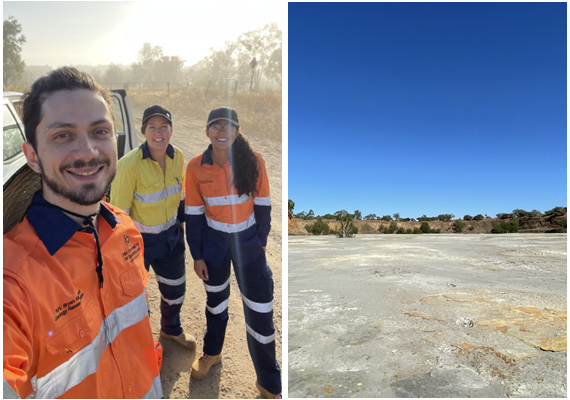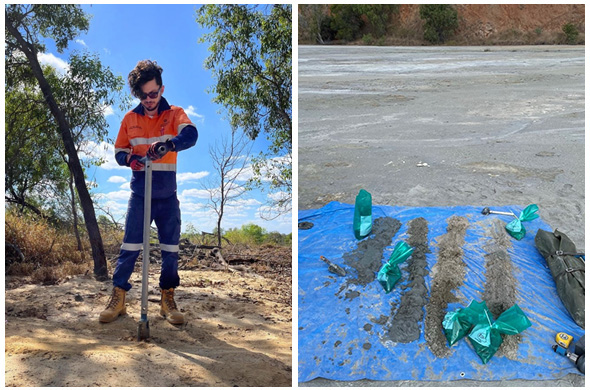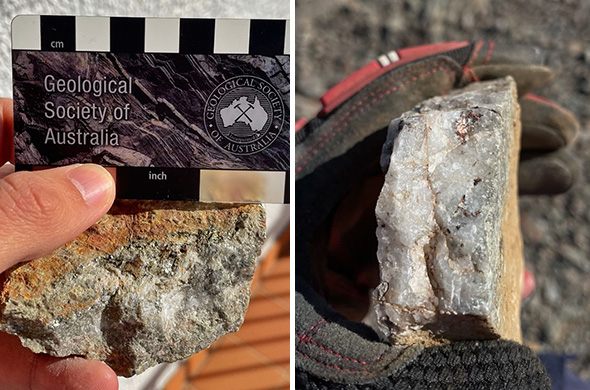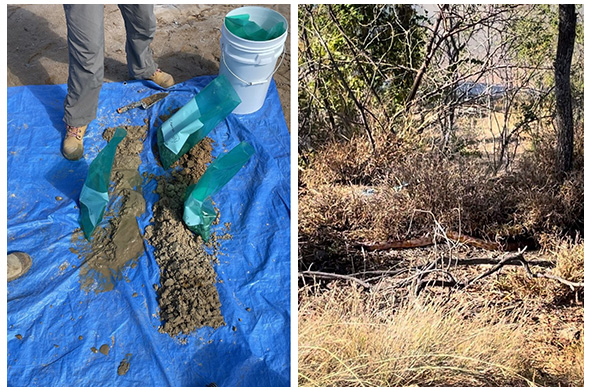Our outdoors office: fieldwork in Charters Towers
Postdoctoral researcher Allan Silva Gomes shares his first fieldwork experience as part of the Mine Waste Transformation through Characterisation (MIWATCH) team.
A fortnight ago the MIWATCH team (Dr Laura Jackson, Dr Sibele Nascimento and myself) headed to Charters Towers, North Queensland, to sample mining tailings and waste rocks from Rishton and Chariah abandoned mining sites. Occurrence of gold-bearing rocks in the Charters Towers area is known since at least 1868, according to the explanatory note of the first geological map of Charters Towers. Gold – and other metals, such as silver, lead and copper – occur associated to sulphide-quartz veins hosted in the Ordovician–Devonian Ravenswood granitoids. Our main goal with this field campaign is to characterize the chemical and mineral composition of mining byproducts to assess their potential as a source of critical metals, and to evaluate the possibility of environmental hazards incurred by waste materials, such as acid rock drainage and increase in salinity.

After arriving in Townsville, we drove straight to Charters Towers to meet Barry Whiting (Remediation Works Supervisor from Northern Operations, Department of Resources –Queensland) in his office. Barry explained the current conditions of the sites, and what has been done in terms of remediation since they were abandoned. He also showed us satellite images of open cut pits, tailings storage facilities and tailing ponds, and the best ways to access our areas of interest.
We went to the Rishton gold mining site in our three days of field campaign. Rishton is located at 30 km east of Charters Towers city centre, and the area occupied by mining activity is roughly of 2.3 km2. According to information provided by the Department of Resources from the Queensland Government, mining operation in Rishton occurred between 1989 and 2009; ore processing from Rishton and from other gold mines nearby also took place in site. We collected mining tailings from five holes using a hand auger at depths of 3–5 m, where we sampled at every meter or whenever the tailings faciology drastically changed. We also collected more than 30 waste rock samples, most containing sulphide-quartz veins – essentially made of pyrite; chalcopyrite was also identified in minor quantities.


We went to Chariah in our last field campaign day. Chariah is located in the vicinities of Charters Towers, and the site has an area of approximately 0.5 km2. According to the Department of Resources from the Queensland Government, Chariah is a former gold tailings reprocessing site, and was abandoned in June 1992. Some remediation efforts were taken by the Department of Resources from the Queensland Government ever since. We visited a capped tailings storage facility and hand-augered three holes in total, where we reached depths of 1–1.6 m. Samples were collected whenever the tailings facies were changing.
To our surprise, we spotted a 2-meter snake (possibly a black-headed python!) in our way out from Chariah. No fieldwork is complete without some wild emotion.

